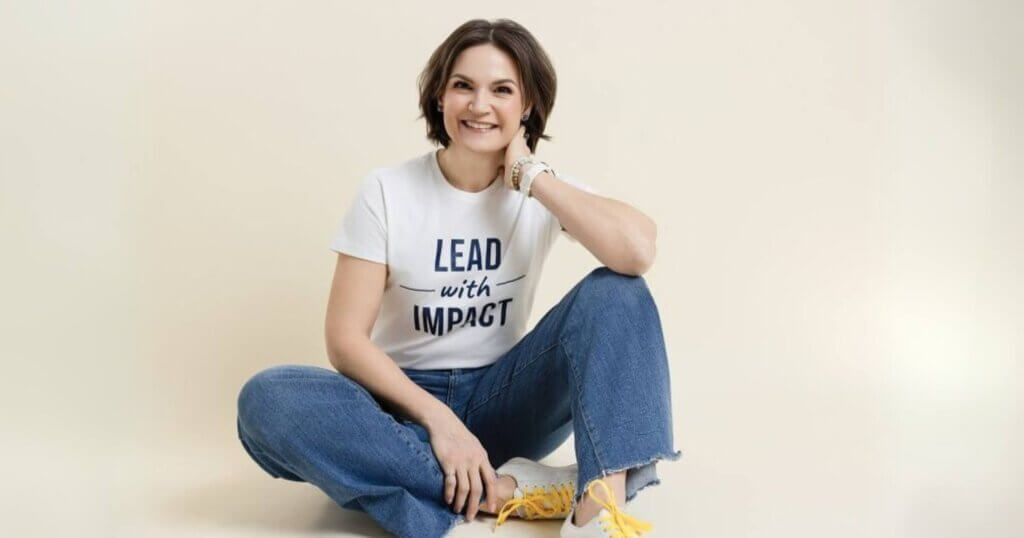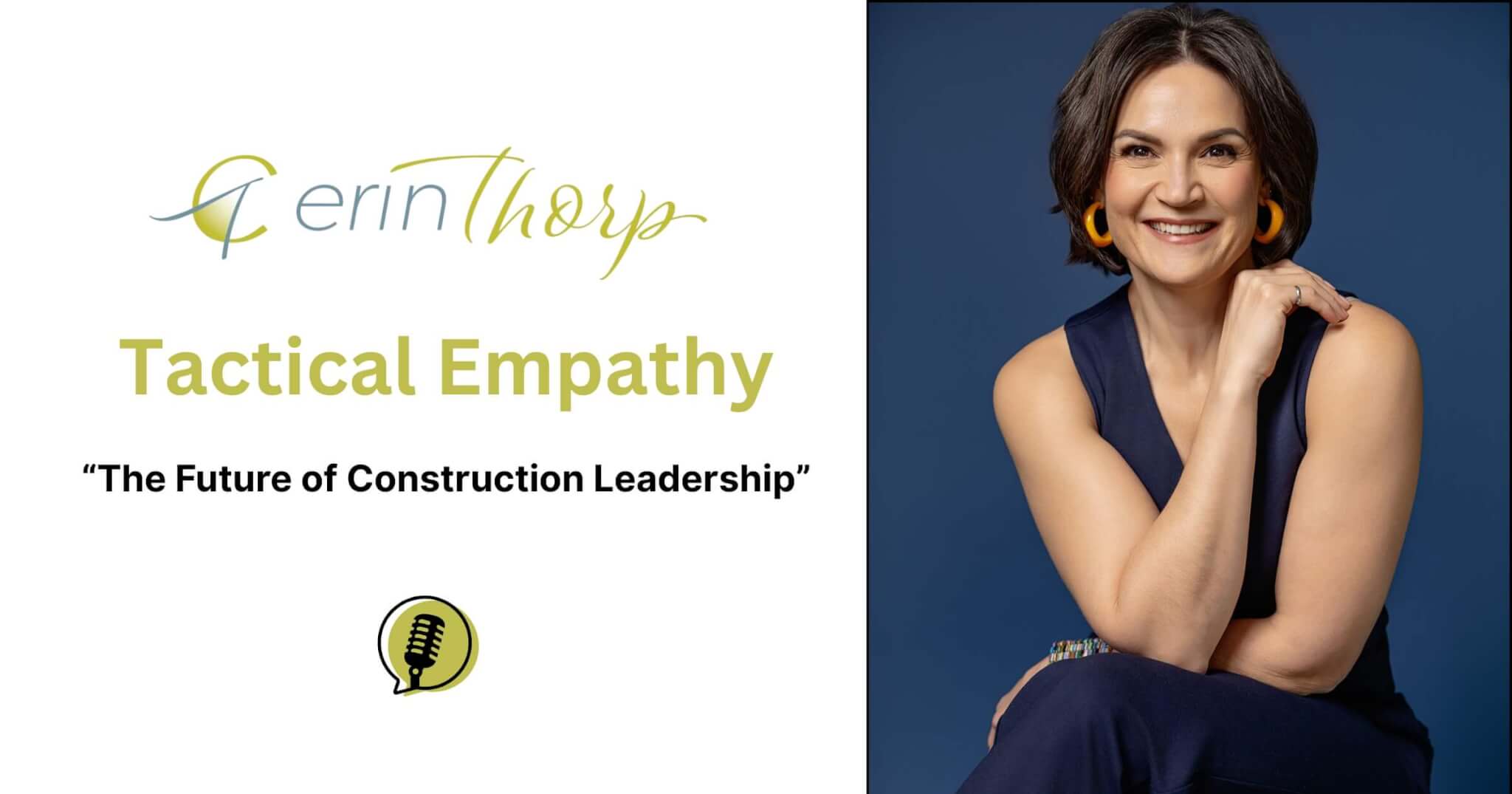When you think of construction, leadership isn’t always the first thing that comes to mind. But for Erin Thorp, a civil engineer turned leadership coach, it’s the foundation of every successful project. After more than two decades working in commercial, civil, and industrial construction across Alberta, Erin shifted her focus to training and coaching the next generation of leaders.
Her philosophy? Empathy is not a weakness but a tactical advantage. Under the Hard Hat sat down with Erin to talk about her career journey, the concept of “Tactical Empathy,” and why emotional intelligence is the future of construction leadership.
UTHH: Can you start by introducing yourself and sharing what you do?
Erin: I am a civil engineer by trade and when I was completing my degree, I did a 16-month internship with a construction company. That’s where I got bitten by the construction bug. I stayed in construction for 22 years, working on commercial, civil, light industrial, and heavy industrial projects in Alberta. I moved through project management, technical sales, and ultimately led construction teams.
Around the 20-year mark, I became really curious about leadership. I was in a leadership role myself and started helping new grads learn how to lead projects. When the pandemic hit, I had to pause that work to focus on project delivery. But I realized how much I missed leadership development. So in 2020, I transitioned full-time into leadership coaching. For the past five years, I’ve been training, facilitating, and coaching leaders in technical industries.
UTHH: What inspired you to take that leap into leadership coaching?
Erin: In 2016, I had a personal experience with a leader that changed everything. My daughter was diagnosed with learning disabilities, and I planned to quit my job to support her. When I told my leader, instead of just accepting my resignation, he asked thoughtful questions, explored options with me, and suggested a leave of absence so I’d have a job to return to.
It was a masterclass in empathy. He connected with what I was going through, helped me see options I couldn’t, and created a win-win for both of us. That experience got me really curious about empathy in leadership. I started journaling, which eventually turned into a book, Inside Out Empathy, published in 2017. I didn’t know then that I’d shift into leadership development, but I kept following those breadcrumbs.
UTHH: You often talk about something called “Tactical Empathy.” What does that mean?
Erin: When I first started talking about empathy, people dismissed it as a “soft skill.” They thought if you’re understanding, you can’t hold boundaries. But empathy doesn’t mean letting go of expectations. Tactical Empathy is about blending understanding with accountability.
It’s about leaning in to understand someone’s perspective which includes the owner, the contractor, and the designer while still holding expectations for quality, deadlines, and customer service. By unlocking different perspectives across generations and disciplines, you get better collaboration and outcomes.
UTHH: Construction is often known for miscommunication and conflict. How do you see the culture of the industry and Tactical Empathy helping to reduce conflict?
Erin: Our industry traditionally has set up a very adversarial relationship between designer, contractor, and owner. It’s kind of like we’ve got to go to battle. We armor up, protect our interests, and then everyone argues around the table. It becomes about who has the most stamina to win the fight.
What I want to see is a shift to “both/and” thinking. How does the designer get what they need, the contractor get what they need, and the owner get what they need? That’s where tactical empathy makes the difference.

Photo courtesy of Erin Thorp.
UTHH: Can you share an example of Tactical Empathy in action?
Erin: On my last project, we had to tie a new building into an old one. The drawings didn’t work, the contractor said it couldn’t be built, the designer wanted it exactly as drawn, and the owner needed it done on time and on budget.
Instead of fighting it out, I got everyone in a room and asked: designer, what’s most important aesthetically? Contractor, what do you need for integrity and warranty? Owner, what’s your priority? Once we knew everyone’s needs, we found a solution. The contractor mocked up two options, the designer picked one, and the owner’s priorities were met.
We finished on time and on budget with everyone liking each other at the end. That’s rare in construction.
UTHH: What tools can leaders use to apply empathy on the jobsite?
Erin: You have to explore and learn your own triggers. For years I was told I was “too emotional” but never given tools to manage it. What I wish someone had told me is: name what you’re feeling. You have to name it to tame it.
And I think it’s important to say: everyone shows emotion in construction. I’ve shed tears in a boardroom. I’ve also seen men bury hammers in the wall or throw chairs. The goal isn’t to stop feeling, it’s to recognize and name it, then ask: what do I need?
Maybe it’s a walk, maybe it’s waiting 24 hours to make a decision. Another tool is challenging the stories you tell yourself. For example, if a delivery is late, instead of assuming the supplier doesn’t care, I’d say: “The story I’m telling myself is that this project isn’t a priority for you. Is that true?” That opens a real conversation instead of escalating conflict.
UTHH: Why do you think construction has been slower to adopt emotionally intelligent leadership?
Erin: Traditionally, construction was led by a very narrow demographic and a command-and-control style. It worked well enough, so no one saw a reason to change. But today we have more diversity, more career options, and higher turnover. That tells us the old way isn’t working anymore.
People don’t just want to survive at work anymore, they want to thrive. To attract and keep talent, leaders need emotional intelligence.
UTHH: How does Tactical Empathy help when working across generations?
Erin: We all know we’ve got multi generations in the industry, and everyone comes with different lived experiences, different needs, wants, desires, feelings, and perspectives. It’s only when we can unlock those differences and really explore them that we get the power of the generations.
If we want the best problem solving, the most innovation, and the best collaboration, we have to take time to understand each other while holding expectations. That’s the future of leadership.
UTHH: For leaders who want to start practicing Tactical Empathy, where should they begin?
Erin: It starts with regulating your own emotions. Be kind to yourself, notice your limits, and recognize your own feelings. When you hide your struggles, you expect others to hide theirs. But when you acknowledge what you’re going through, it creates space for others to be real too.
It’s not about letting people off the hook, it’s about saying, “Here’s the goal. Here’s the expectation. What do you need to succeed?”
That’s also why my book is called “Inside Out Empathy.” It starts with you.
UTHH: Do you think construction is a good career path for the next generation?
Erin: Absolutely. People often think of construction as just the trades, but there are so many professional roles too. I love that the conversation around trades has shifted. When I was in school, trades were seen as what you did if you couldn’t cut it at university. Today, it’s a real choice. Half of my son’s friends went to university, and the other half went into trades. Both are valuable.
What I love most is being able to point to something tangible. I can drive past projects I’ve built, stay in hotels I worked on, and share those stories with my kids. That sense of impact is incredibly rewarding.
UTHH: Can you tell us about your current work and how people can connect with you?
Erin: I run workshops ranging from lunch-and-learns to multi-day team development programs. We offer Tactical Empathy workshops, leadership development products like DISC®, Five Behaviors®, and SLII®, plus group and one-on-one coaching. I also do keynote speaking at town halls, kickoffs, and events.
You can reach me at www.erinthorp.ca or email me at hello@erinthorp.ca. And remember, there’s no “e” in Thorpe—otherwise you’ll reach a different Erin!
If you enjoyed this article and want to learn more, you can catch the full podcast episode here:
Thank you to Erin Thorp for joining us on the UTHH podcast and sharing her insights. To learn more about her work, visit her website or connect on LinkedIn. Want more stories like this? Subscribe to the newsletter and follow Under the Hard Hat on LinkedIn.


